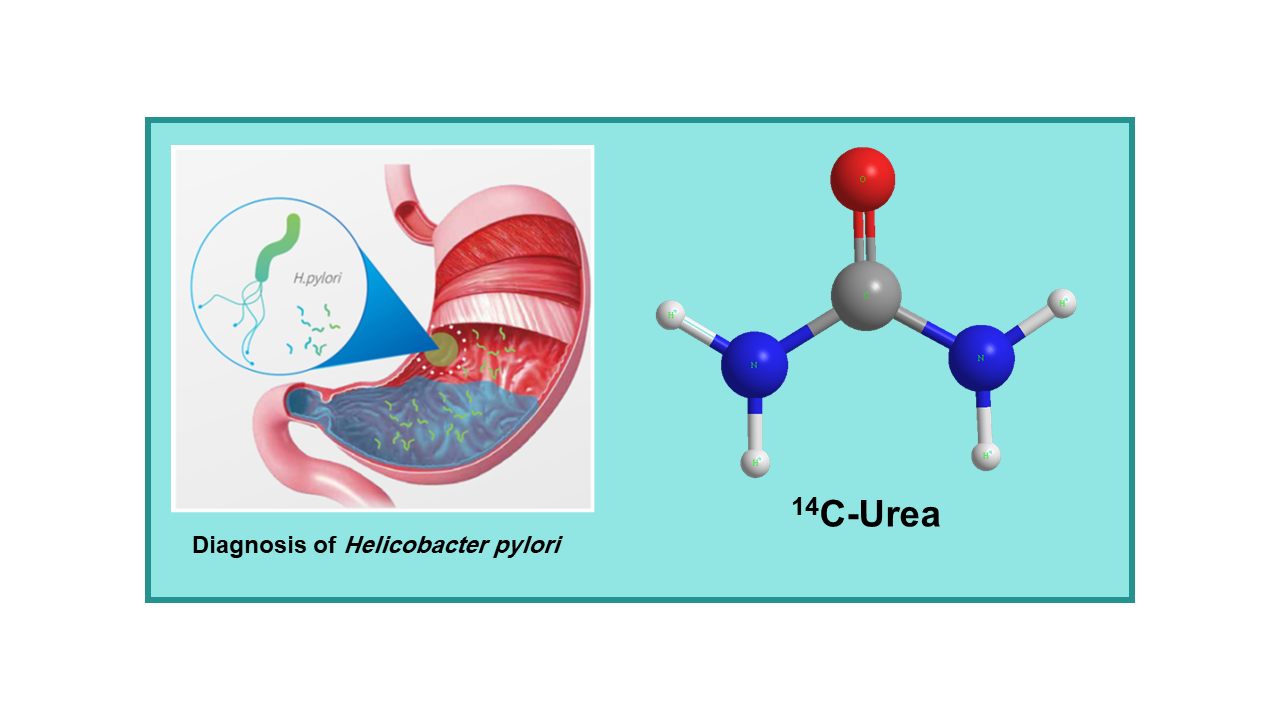
14C-Urea
February 3, 2024
Description
14C-Urea (or Pytest; 14C-Urea breath test) is a qualitative and non-invasive method for the diagnosis of Helicobacter pylori. It consists of 14C-labeled urea absorbed on sugar pellets. This not an imaging technology, but a simple biological radioactive diagnostic tool.
Clinical applications
14C-Pytest is a diagnostic procedure used to identify infections by Helicobacter pylori, a spiral bacterium implicated in gastritis, gastric ulcer and peptic ulcer that has the property to convert urea in carbon dioxide and ammonia. It is applied as a breath test. The radioactive substance is supplied in a capsule swallowed by the patient. If gastric urease from Helicobacter pylori is present, urea is split to form CO2 (carbon dioxide which is produce hence in its radioactive form) and NH3 (ammonia). A breath sample taken ten minutes after ingestion allows the measurement of it content in 14C-CO2 by analysis in a liquid scintillation counter. Content is directly proportional to the infection.
Dose per patient is in the range of 1 µCi.
Availability
This product is readily available from Avanos Medical, Inc (formerly Halyard Health, Inc.).
Competition
Urea labeled with non-radioactive Carbon-13 (13C-Urea) allows obtaining the same information, but needs access to a mass spectrometry device instead of a scintillation counter. Helibacter pylori can also be detected by the ‘rapid urease test’ (Campylobacter- like organism test – CLO-test) that is performed at the same time of gastroscopy.
Comments
14C-Pytest can definitely not be considered as a nuclear medicine test, but it is the most used radioactive test in which a radioactive substance is provided to a patient without the aim to generate an image or to cure. As the handling of radioactive substances needs a certain expertise and environment, nuclear medicine departments can be asked to handle these patients. However, Urea breath test is not a nuclear medicine procedure and must be considered only as a biological test. Let us also mention here Radio-Immuno Assays (RIA) in which liquid, cell or tissue samples are tested ex-vivo with radioactive reagents mainly based on 3H, 125I or 32P. In this type of tests, the patient never enters in contact with radioactivity or the radioactive substances. RIA is out of the scope of this report and definitely does not belong to the Nuclear Medicine field.